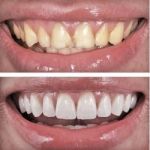The Role of Dental Sealants in Preventing Cavities in Children
- 1. What Are Dental Sealants and How Do They Work?
- 2. Why Are Dental Sealants Important for Children?
- 3. How Dental Sealants Help Prevent Cavities in Children
- 4. Real-Life Case Studies: How Dental Sealants Saved Teeth
- 5. How to Care for Your Child’s Teeth After Getting Sealants
1. What Are Dental Sealants and How Do They Work?
Dental sealants are a protective coating applied to the chewing surfaces of the back teeth (molars) to prevent cavities. The sealant is a thin, plastic material that bonds into the grooves of the teeth, creating a smooth surface that keeps food and bacteria from accumulating in the crevices. This simple, non-invasive treatment acts as a barrier, helping to reduce the likelihood of cavities forming.
Sealants are especially effective in children because their molars have deep grooves, which can easily trap food particles and bacteria. By filling in these grooves with a protective layer, sealants can prevent cavities from taking hold, making them a key part of cavity prevention in pediatric dentistry.
2. Why Are Dental Sealants Important for Children?
Children’s teeth are more susceptible to cavities, especially in the back teeth where molars have deep grooves. The American Dental Association (ADA) reports that children are particularly prone to tooth decay due to their developing brushing skills and dietary habits. Dental sealants play a crucial role in protecting those teeth from cavities by providing an added layer of defense against plaque buildup.
Sealants are typically recommended for children as soon as their permanent molars come in, usually around ages 6 and 12. At this stage, children may still struggle with brushing their back teeth effectively, making sealants a great preventive measure to ensure their teeth stay healthy as they grow.
3. How Dental Sealants Help Prevent Cavities in Children
Dental sealants are highly effective at preventing cavities by protecting the hard-to-reach areas of your child’s teeth. The deep grooves in molars are perfect for trapping food particles and bacteria, which can lead to decay if not cleaned thoroughly. Sealants prevent this by filling in these grooves with a smooth surface, making it easier to clean the teeth and less likely that harmful bacteria will cause cavities.
Research has shown that dental sealants can reduce the risk of cavities by up to 80% in the first two years after application, with continued protection for up to four years. This makes sealants one of the most effective and cost-efficient ways to protect your child’s teeth, especially considering how difficult it can be for young children to maintain perfect brushing habits.
4. Real-Life Case Studies: How Dental Sealants Saved Teeth
One parent shared their experience with dental sealants for their child, Sophie, who had struggled with frequent cavities despite regular brushing. After applying sealants to Sophie’s molars, they saw a drastic reduction in cavities, and her dentist noted that her teeth were much cleaner and healthier. The sealants protected her molars from the bacteria that would typically cause cavities, and Sophie has now been cavity-free for over two years.
Another case involved a young boy named Lucas, whose mother noticed that he had several cavities on his molars. After his dentist applied sealants, they were able to stop further decay from forming, and Lucas hasn’t had any more cavities since. His parents were thrilled that sealants not only saved his teeth from decay but also reduced the anxiety of frequent dental visits for fillings and treatment.
5. How to Care for Your Child’s Teeth After Getting Sealants
After your child receives dental sealants, it’s important to maintain good oral hygiene to ensure their continued effectiveness. While sealants are durable, they are not indestructible. Be sure to encourage your child to brush and floss regularly, paying particular attention to their back teeth. It’s also important to avoid chewing on hard objects, such as ice or pencils, which could damage the sealants.
Additionally, regular dental check-ups are crucial to ensure that the sealants remain intact and effective. Your child’s dentist will check the sealants during routine visits to make sure they haven’t worn down or chipped and may reapply them if necessary. With proper care, dental sealants can protect your child’s teeth for many years.
For more information on dental sealants and how they can help prevent cavities in children, visit Dentistry Toothtruth and schedule a consultation with our expert pediatric dental team.







 Jody B Vance, DDS, MS, PC4.0 (119 review)
Jody B Vance, DDS, MS, PC4.0 (119 review) Community Health Centers4.0 (206 review)
Community Health Centers4.0 (206 review) Dental Smiles of Joliet4.0 (268 review)
Dental Smiles of Joliet4.0 (268 review) Equitas Health Short North Medical Center3.0 (96 review)
Equitas Health Short North Medical Center3.0 (96 review) Riverside Tooth Co.5.0 (276 review)
Riverside Tooth Co.5.0 (276 review) Madison Dental Arts5.0 (19 review)
Madison Dental Arts5.0 (19 review) The Importance of Oral Health Education During Pregnancy for a Healthy Pregnancy
The Importance of Oral Health Education During Pregnancy for a Healthy Pregnancy Best Tips for Brushing Your Teeth Properly for Healthy Gums: Essential Techniques for Oral Health
Best Tips for Brushing Your Teeth Properly for Healthy Gums: Essential Techniques for Oral Health Why Skipping Dental Checkups Can Lead to Bigger Oral Health Problems
Why Skipping Dental Checkups Can Lead to Bigger Oral Health Problems Advantages of Porcelain Dental Restorations
Advantages of Porcelain Dental Restorations How Can Diabetes Cause Tooth and Gum Problems? Preventing and Managing Oral Health Issues
How Can Diabetes Cause Tooth and Gum Problems? Preventing and Managing Oral Health Issues Healthy Habits for Promoting Good Oral Health and Hygiene: Tips for a Healthy Smile
Healthy Habits for Promoting Good Oral Health and Hygiene: Tips for a Healthy Smile